Zhizhi Yu
KGTrust: Evaluating Trustworthiness of SIoT via Knowledge Enhanced Graph Neural Networks
Feb 22, 2023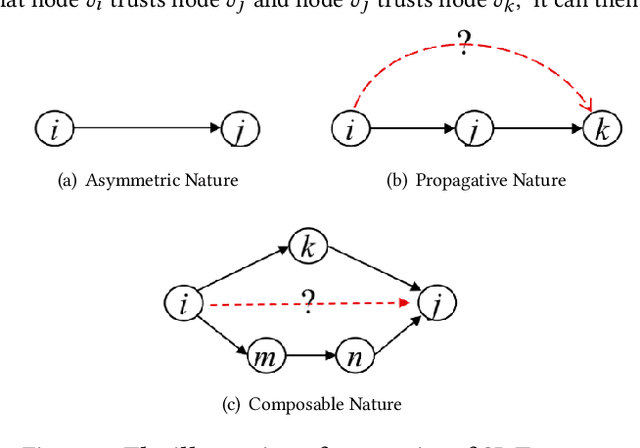
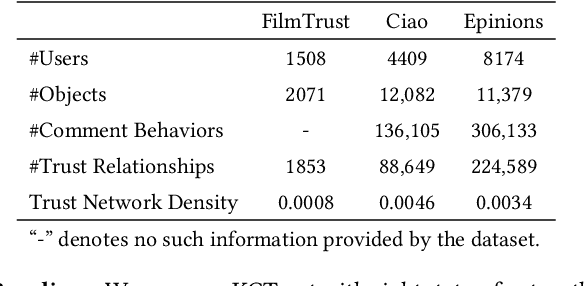
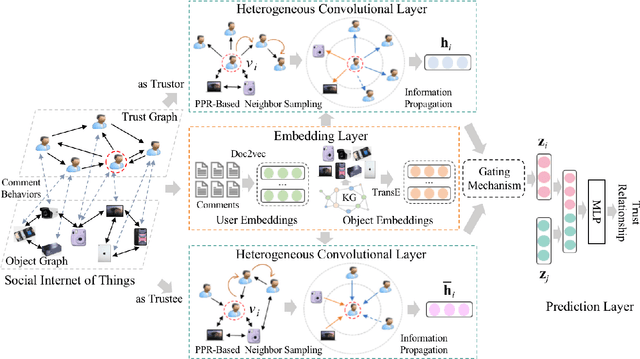

Abstract:Social Internet of Things (SIoT), a promising and emerging paradigm that injects the notion of social networking into smart objects (i.e., things), paving the way for the next generation of Internet of Things. However, due to the risks and uncertainty, a crucial and urgent problem to be settled is establishing reliable relationships within SIoT, that is, trust evaluation. Graph neural networks for trust evaluation typically adopt a straightforward way such as one-hot or node2vec to comprehend node characteristics, which ignores the valuable semantic knowledge attached to nodes. Moreover, the underlying structure of SIoT is usually complex, including both the heterogeneous graph structure and pairwise trust relationships, which renders hard to preserve the properties of SIoT trust during information propagation. To address these aforementioned problems, we propose a novel knowledge-enhanced graph neural network (KGTrust) for better trust evaluation in SIoT. Specifically, we first extract useful knowledge from users' comment behaviors and external structured triples related to object descriptions, in order to gain a deeper insight into the semantics of users and objects. Furthermore, we introduce a discriminative convolutional layer that utilizes heterogeneous graph structure, node semantics, and augmented trust relationships to learn node embeddings from the perspective of a user as a trustor or a trustee, effectively capturing multi-aspect properties of SIoT trust during information propagation. Finally, a trust prediction layer is developed to estimate the trust relationships between pairwise nodes. Extensive experiments on three public datasets illustrate the superior performance of KGTrust over state-of-the-art methods.
TeKo: Text-Rich Graph Neural Networks with External Knowledge
Jun 15, 2022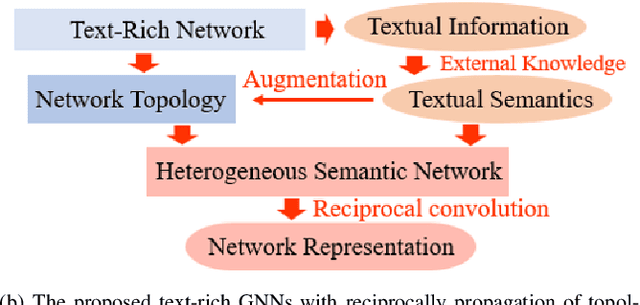
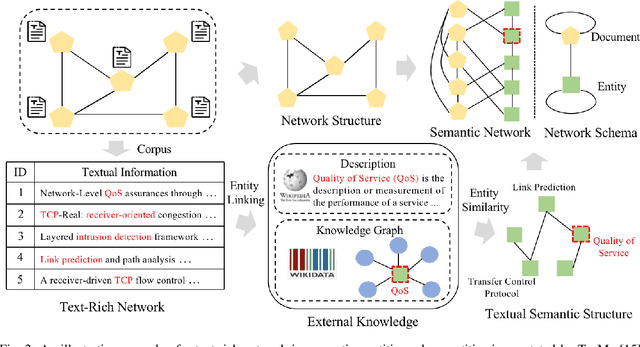
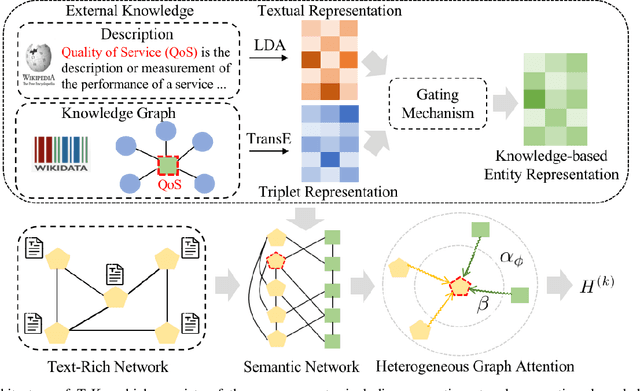

Abstract:Graph Neural Networks (GNNs) have gained great popularity in tackling various analytical tasks on graph-structured data (i.e., networks). Typical GNNs and their variants follow a message-passing manner that obtains network representations by the feature propagation process along network topology, which however ignore the rich textual semantics (e.g., local word-sequence) that exist in many real-world networks. Existing methods for text-rich networks integrate textual semantics by mainly utilizing internal information such as topics or phrases/words, which often suffer from an inability to comprehensively mine the text semantics, limiting the reciprocal guidance between network structure and text semantics. To address these problems, we propose a novel text-rich graph neural network with external knowledge (TeKo), in order to take full advantage of both structural and textual information within text-rich networks. Specifically, we first present a flexible heterogeneous semantic network that incorporates high-quality entities and interactions among documents and entities. We then introduce two types of external knowledge, that is, structured triplets and unstructured entity description, to gain a deeper insight into textual semantics. We further design a reciprocal convolutional mechanism for the constructed heterogeneous semantic network, enabling network structure and textual semantics to collaboratively enhance each other and learn high-level network representations. Extensive experimental results on four public text-rich networks as well as a large-scale e-commerce searching dataset illustrate the superior performance of TeKo over state-of-the-art baselines.
A Survey of Community Detection Approaches: From Statistical Modeling to Deep Learning
Jan 03, 2021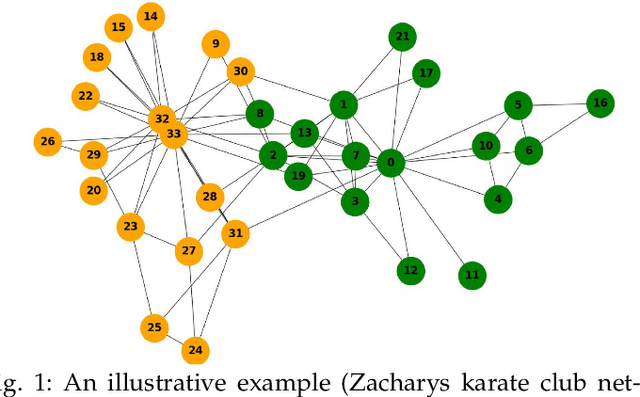



Abstract:Community detection, a fundamental task for network analysis, aims to partition a network into multiple sub-structures to help reveal their latent functions. Community detection has been extensively studied in and broadly applied to many real-world network problems. Classical approaches to community detection typically utilize probabilistic graphical models and adopt a variety of prior knowledge to infer community structures. As the problems that network methods try to solve and the network data to be analyzed become increasingly more sophisticated, new approaches have also been proposed and developed, particularly those that utilize deep learning and convert networked data into low dimensional representation. Despite all the recent advancement, there is still a lack of insightful understanding of the theoretical and methodological underpinning of community detection, which will be critically important for future development of the area of network analysis. In this paper, we develop and present a unified architecture of network community-finding methods to characterize the state-of-the-art of the field of community detection. Specifically, we provide a comprehensive review of the existing community detection methods and introduce a new taxonomy that divides the existing methods into two categories, namely probabilistic graphical model and deep learning. We then discuss in detail the main idea behind each method in the two categories. Furthermore, to promote future development of community detection, we release several benchmark datasets from several problem domains and highlight their applications to various network analysis tasks. We conclude with discussions of the challenges of the field and suggestions of possible directions for future research.
BiTe-GCN: A New GCN Architecture via BidirectionalConvolution of Topology and Features on Text-Rich Networks
Oct 23, 2020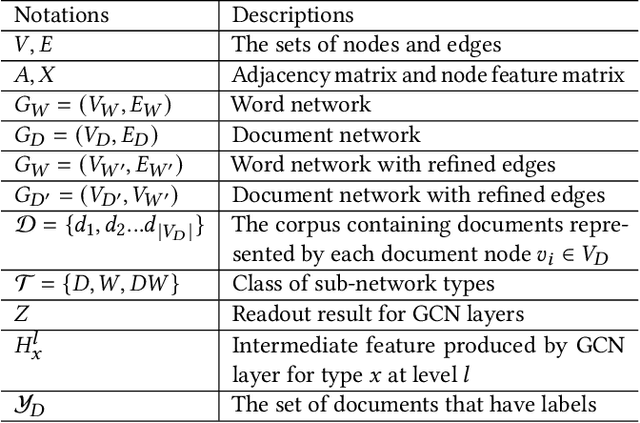
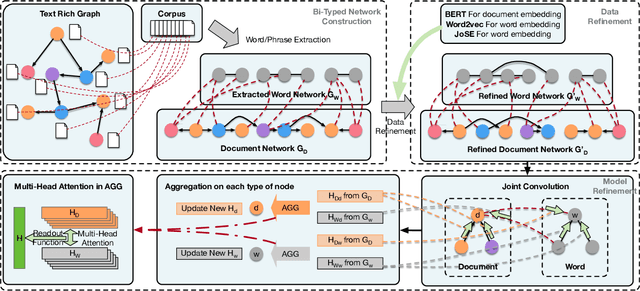
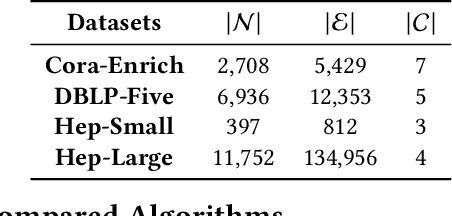
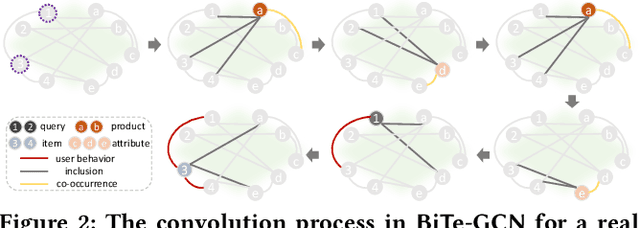
Abstract:Graph convolutional networks (GCNs), aiming to integrate high-order neighborhood information through stacked graph convolution layers, have demonstrated remarkable power in many network analysis tasks. However, topological limitations, including over-smoothing and local topology homophily, limit its capability to represent networks. Existing studies only perform feature convolution on network topology, which inevitably introduces unbalance between topology and features. Considering that in real world, the information network consists of not only the node-level citation information but also the local text-sequence information. We propose BiTe-GCN, a novel GCN architecture with bidirectional convolution of both topology and features on text-rich networks to solve these limitations. We first transform the original text-rich network into an augmented bi-typed heterogeneous network, capturing both the global node-level information and the local text-sequence information from texts. We then introduce discriminative convolution mechanisms to performs convolutions of both topology and features simultaneously. Extensive experiments on text-rich networks demonstrate that our new architecture outperforms state-of-the-art by a breakout improvement. Moreover, this architecture can also be applied to several e-commerce searching scenes such as JD\ searching. The experiments on the JD dataset validate the superiority of the proposed architecture over the related methods.
GCN for HIN via Implicit Utilization of Attention and Meta-paths
Jul 06, 2020



Abstract:Heterogeneous information network (HIN) embedding, aiming to map the structure and semantic information in a HIN to distributed representations, has drawn considerable research attention. Graph neural networks for HIN embeddings typically adopt a hierarchical attention (including node-level and meta-path-level attentions) to capture the information from meta-path-based neighbors. However, this complicated attention structure often cannot achieve the function of selecting meta-paths due to severe overfitting. Moreover, when propagating information, these methods do not distinguish direct (one-hop) meta-paths from indirect (multi-hop) ones. But from the perspective of network science, direct relationships are often believed to be more essential, which can only be used to model direct information propagation. To address these limitations, we propose a novel neural network method via implicitly utilizing attention and meta-paths, which can relieve the severe overfitting brought by the current over-parameterized attention mechanisms on HIN. We first use the multi-layer graph convolutional network (GCN) framework, which performs a discriminative aggregation at each layer, along with stacking the information propagation of direct linked meta-paths layer-by-layer, realizing the function of attentions for selecting meta-paths in an indirect way. We then give an effective relaxation and improvement via introducing a new propagation operation which can be separated from aggregation. That is, we first model the whole propagation process with well-defined probabilistic diffusion dynamics, and then introduce a random graph-based constraint which allows it to reduce noise with the increase of layers. Extensive experiments demonstrate the superiority of the new approach over state-of-the-art methods.
 Add to Chrome
Add to Chrome Add to Firefox
Add to Firefox Add to Edge
Add to Edge